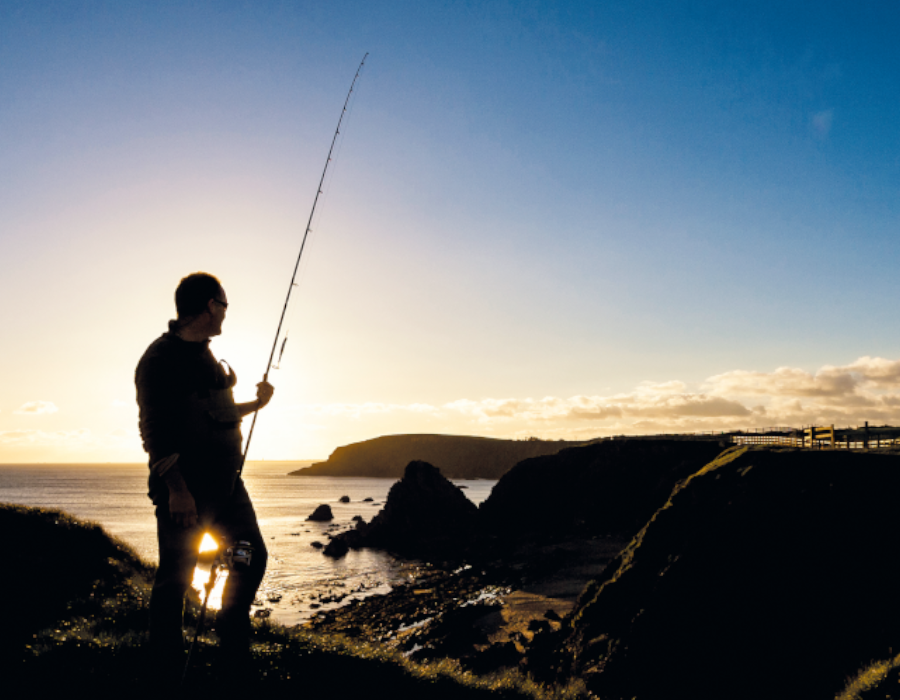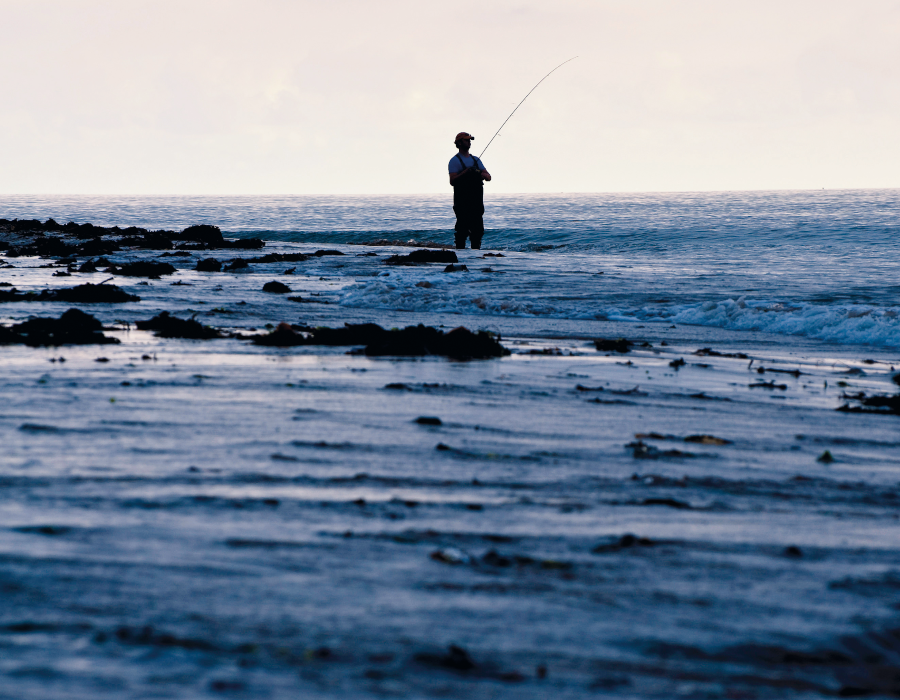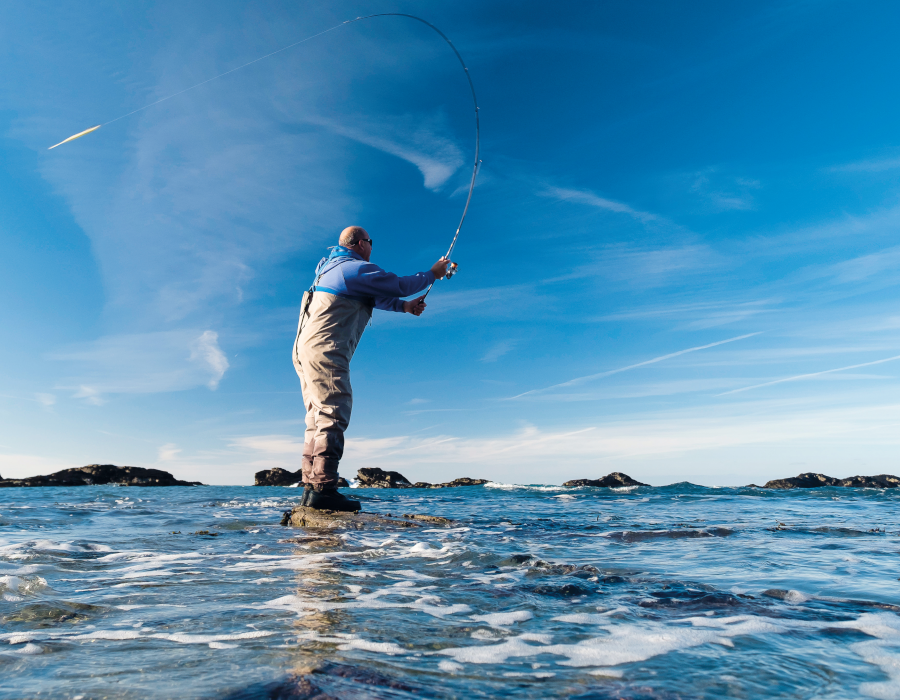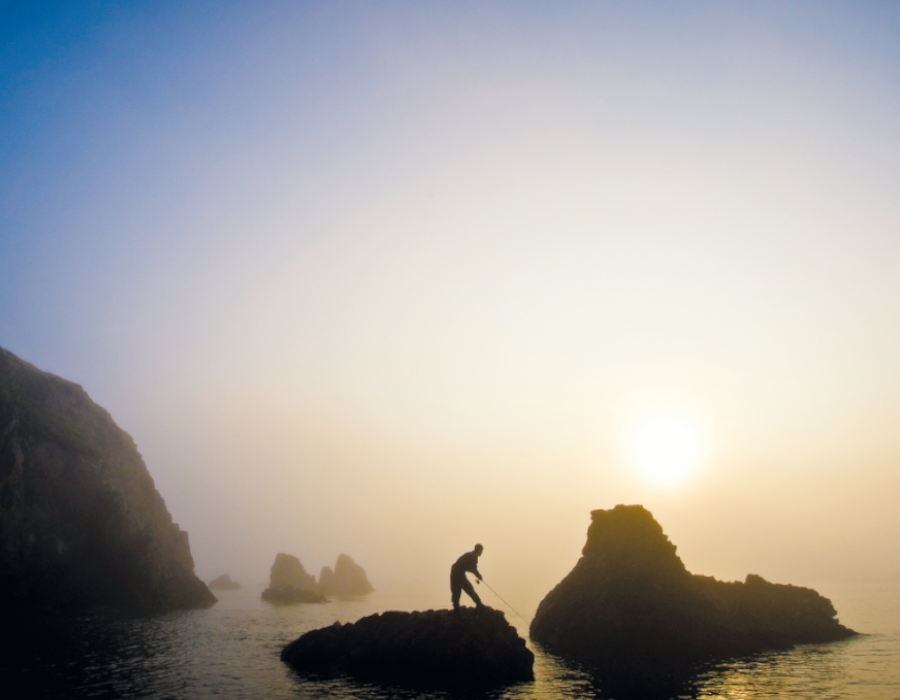In the first part of a new series on how to improve your photography skills Henry Gilbey asks you to slow down and think
In association with Harrison Camera’s
It was fishing that really got me into photography many years ago, and it’s photography which continues to fascinate me just as much as fishing.
The two things are completely inseparable in my world, and while I accept that this may not be the case for you, judging by the sheer numbers of fishing related photos I see on social media, or being submitted to a magazine like Sea Angler, I would guess that the majority of you here enjoy taking photos of your fishing.
This might be the fish you catch, a friend of yours fishing, some of the fishing tackle you are using or simply the location where you are fishing because it looks so good.
In this new series we are going to look at the photography of fishing and work out how we might all take better photos which are more interesting and enjoyable to look at and share.
At the end of the day, you want other anglers to see your photos, but how do we get somebody to stop scrolling through like crazy and instead really sit up and take notice of a particular photo you have taken?
STOP & THINK
What is the single thing that comes across to me from nearly all the fishing related photos I see?
If we momentarily forget about the technical aspects of photography then the single thing which nearly always springs to mind when I see most fishing related photos is this – that with a small amount of thought and vision virtually every single photo could be so much better.
We have never had it so easy when it comes to being able to record the world around us via our mobile phones especially, but just because we can take more photos so easily doesn’t automatically mean that those photos are going to be any better than they were during the days of film when you had to take unexposed rolls of film into a physical shop and wait a few days until you could go in and pick up your envelope of developed photos.
If this sounds like an alternate universe to you then you are probably not old enough to remember those (olden) days. These days we have amazingly competent cameras in our pockets and we can do a lot more with them, and indeed proper camera gear, if we stop and think.
Without getting yourself arrested for looking at people, the next time you are out and about watch people when they are taking photos of something.
It’s most likely going to be with a mobile phone because virtually everybody has one with at least a half-decent camera on it, but even if you see people out and about with real camera gear, I bet that nearly every single person simply stands there and shoots a bunch of photos.

Let’s forget all about focusing and composition and exposure for the moment and instead concentrate on what nearly everybody does without even realising it, which in turn so often makes for photographs which simply don’t grab us very much when we look at them. There is a reason for this.
What are we most used to seeing when we look through our eyes? The world at our eye-level, which in turn is why when the majority of photos are shot at eye-level we sometimes don’t engage with them a huge amount unless there is something exciting going on in the photo.
By no means am I saying that you can’t take arresting looking photos from the natural level of your eyes, rather that far too many people simply whip their phone out and record what they see – which in turn can often make for a photo which often doesn’t stop our eyes and say ‘spend a bit more time looking at me’.
I passionately believe that fishing photography is so much about creativity, but to be creative requires a bit of thought.
If I am trying to take a clinical photograph of, say, a building because I want to remember the colours of the stained-glass windows then by all means stand there and try to record only what you are seeing when you stand there at your natural height, but let’s all decide here that we want to make fishing look as good as possible.
TRY THIS TODAY
We will get onto camera gear and all that sort of stuff at a later date, but for now let’s try something. When you are next out there fishing with a mate and you want to take a photo of them if they are standing in an interesting looking spot or the light is particularly good, try this for me – take three photos from the same spot.
For the first one please shoot, as most people do, and simply raise your mobile phone or camera up to the level of your eyes and take a photo. For the next photo try raising the phone or camera above your head or stand on a rock or bench and shoot the same scene but now you are at a slight ‘look down’ angle.
For the last photo I want you to either lie down on the ground or at least kneel down, and fire away. Now scroll through the three photographs and try to really concentrate on which photo ‘stops’ you as you are looking through. I bet you it isn’t the first photo where you simply shot from the level of your eyes.

Already then we are doing something a bit different by simply changing the angle and therefore perspective of the photograph, but what did you also do which you can often very simply change to produce a more interesting end result?
You took the photo from where you thought of the photo, but what is to say that where you took the photo from was the most interesting way to shoot it? Why simply stand or lie down when there is quite likely a more creative place to shoot the photo from?
These days it’s almost that because we have mobile phones with cameras we simply fire away with little thought of the end result, indeed just the other day my eldest girl whipped out her mobile phone (which dad/me pays for!) and started shooting what I could tell were going to be some incredibly boring photographs of a lake.
It was actually a pretty lake in some fairly flat light but which with a bit of thought could have been photographed in at least a relatively interesting way, yet she took some photos at eye-level.
I then asked her why she was taking such boring photos when there was also very little chance she would ever look at those photos ever again, let alone share them with her friends.
The last thing my daughter wants to do is listen to dad banging on about how with a tiny bit of thought and effort she could have taken much better photos of that lake, but the experience comes back to what we are talking about here.
Look around and move around. For sure, a part of the creative process is to experiment with the angle at which we shoot fishing photographs, but instead of simply firing away because we can these days, why not take a bit of time to think and look and then create.

If you see something interesting that you want to photograph, I would hazard a guess that you could make the end result more interesting if you moved around and tried different angles, which of course we can easily do these days because we aren’t ripping through rolls of film and then having to pay to have them developed.
I love digital photography by the way; indeed, I had the first ever digital front cover for this very magazine, but just because shooting lots of photos is so easy these days doesn’t make the art of photography any less important if you want to create better photographs.
Now I actually shoot very few fishing photos on my mobile phone, but this is mainly for technical reasons which I won’t bore you with quite yet.
I always carry at least one camera body and a lens or multiple lenses with me when I go fishing so my creative choices are far greater than just using a mobile phone, but at the end of the day it changes nothing.
Take a bit of time, think about what you see in front of you, don’t be in a hurry to just shoot and dump photos on a camera roll, and let’s work on shooting more interesting and dramatic photos which make this sport we all love look as impressive as possible and which make for great memories.







